Strong
Milepost 11.1
Here is a general overview shot of Strong, looking north. Enginehouse and coal shed in the front, depot in the center of the photo, freight house off to the right. Along the back is the familiar wall of structures, all modeled to scale -- the Toothpick Clearing House at far left, then the yellow New England Creamery Company, the Daggett and Will store just visible behind the depot and ball signal, then the massive Forster Mill on the right.
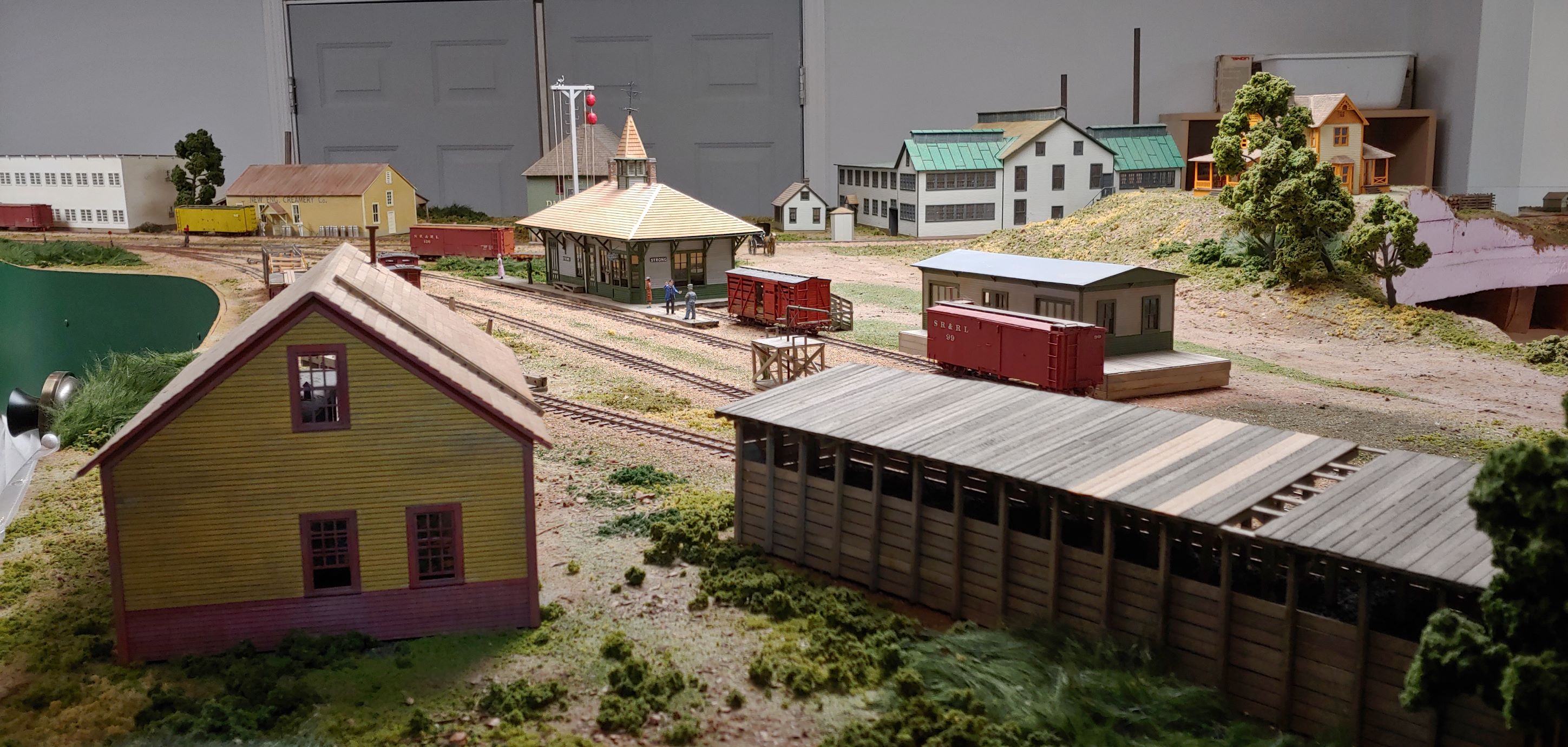
Coming into Strong from the south, the first structure is the Burnham and Morrill corn cannery. The prototype was a very long building, and I only had enough space to model the north end of the structure. Unfortunately, I also had to omit the distinctive highway overpass that was just to the south of the corn cannery. Those were two of the only three significant omissions to the model of Strong. Otherwise, everything is strictly to scale, with no selective compression:
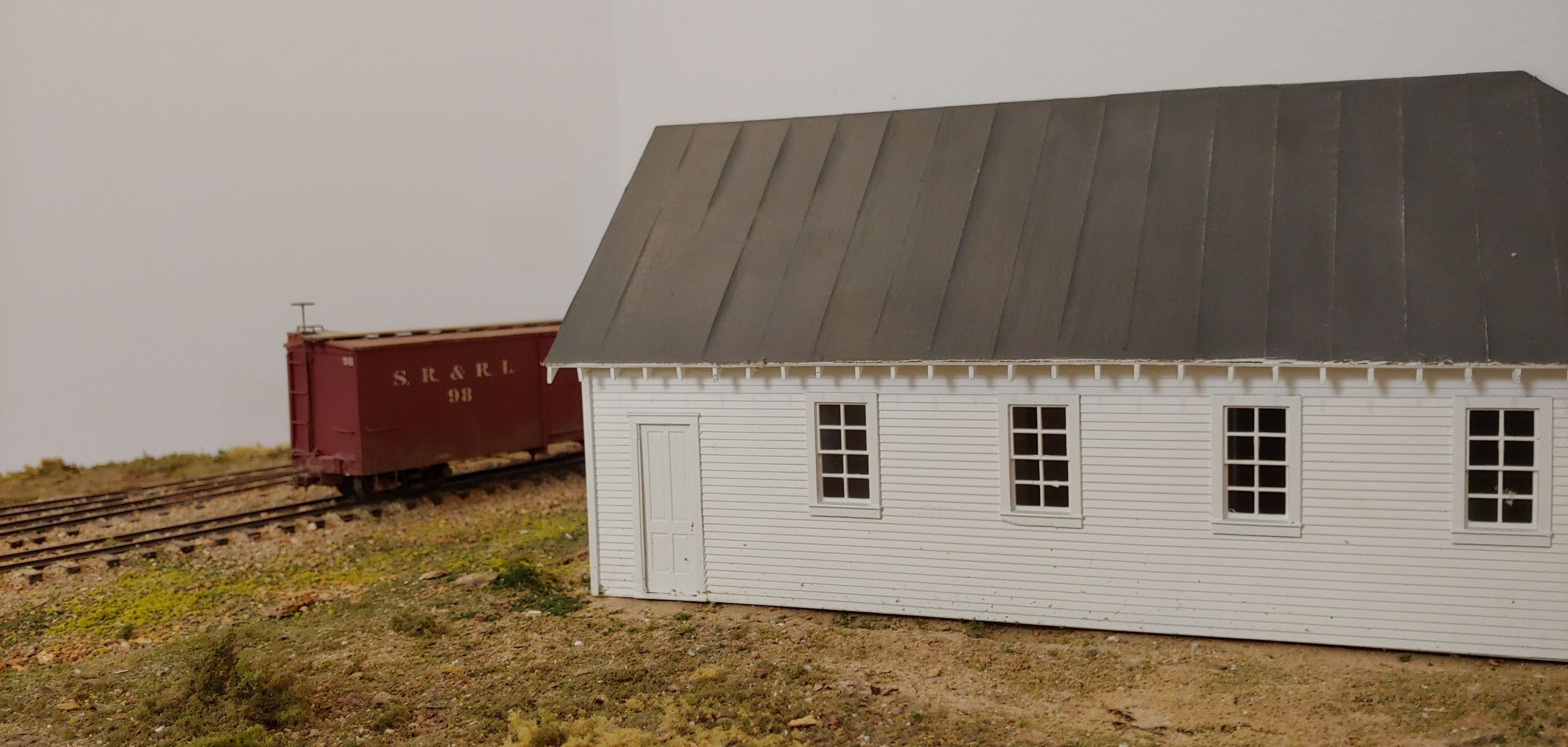
The Brackley apple packing shed is the third concession, as I was only able to model the front quarter or so of the structure. The building nevertheless retains its distinctive barrel roll-over. Note that the employees are observing all of the appropriate safety precautions, pre-OSHA:
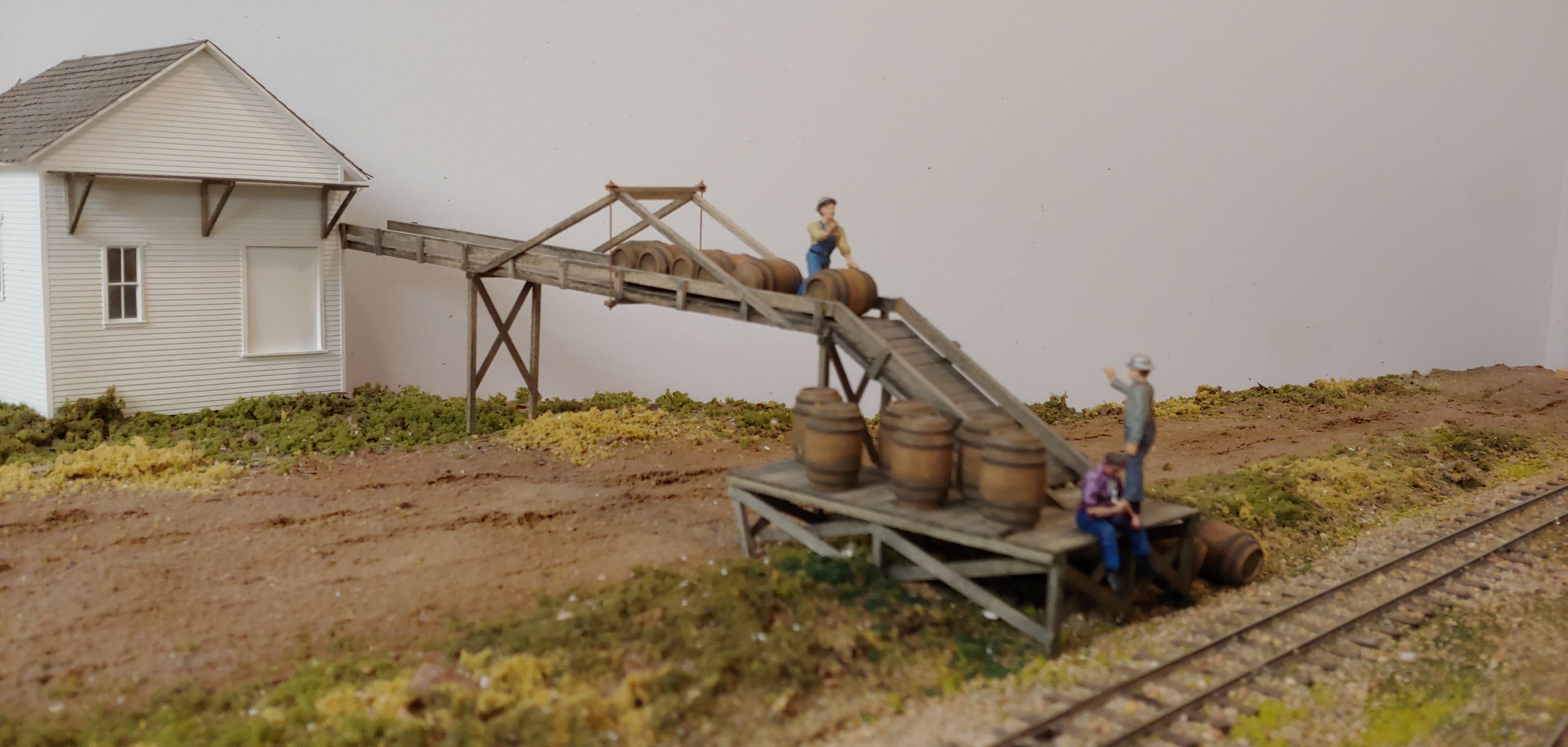
The coal dock is from a Sandy River Car Shops kit, selective expanded to the prototype length, rather than selectively compressed. The two-stall engine house may have been gone by 1919, but it is a distinctive structure, built from the excellent kit from Portland Locomotive Works. It was never repainted to the gray and pond-bottom-green scheme used by the SR&RL and parent Maine Central. The turntable is built from an NJ International kit:
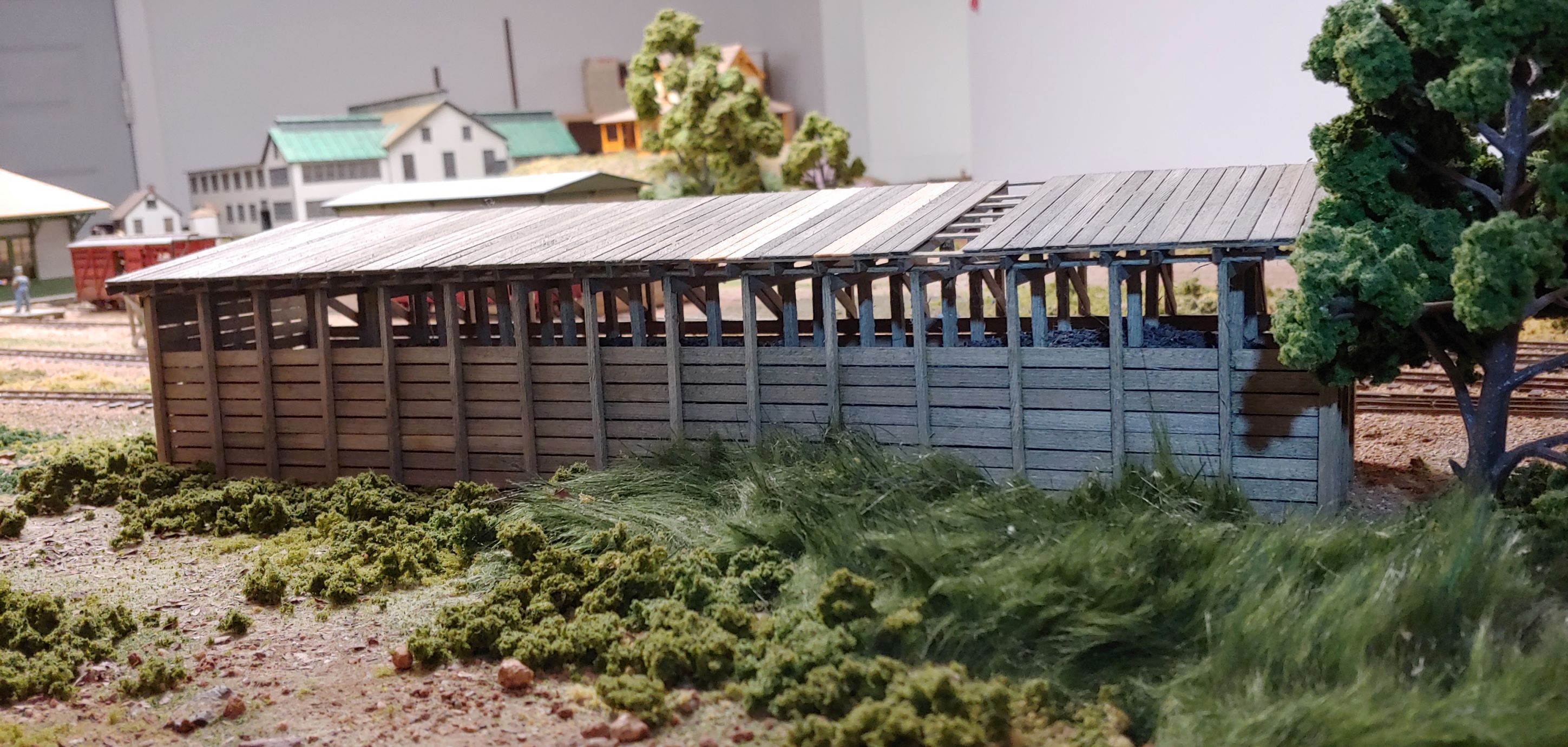
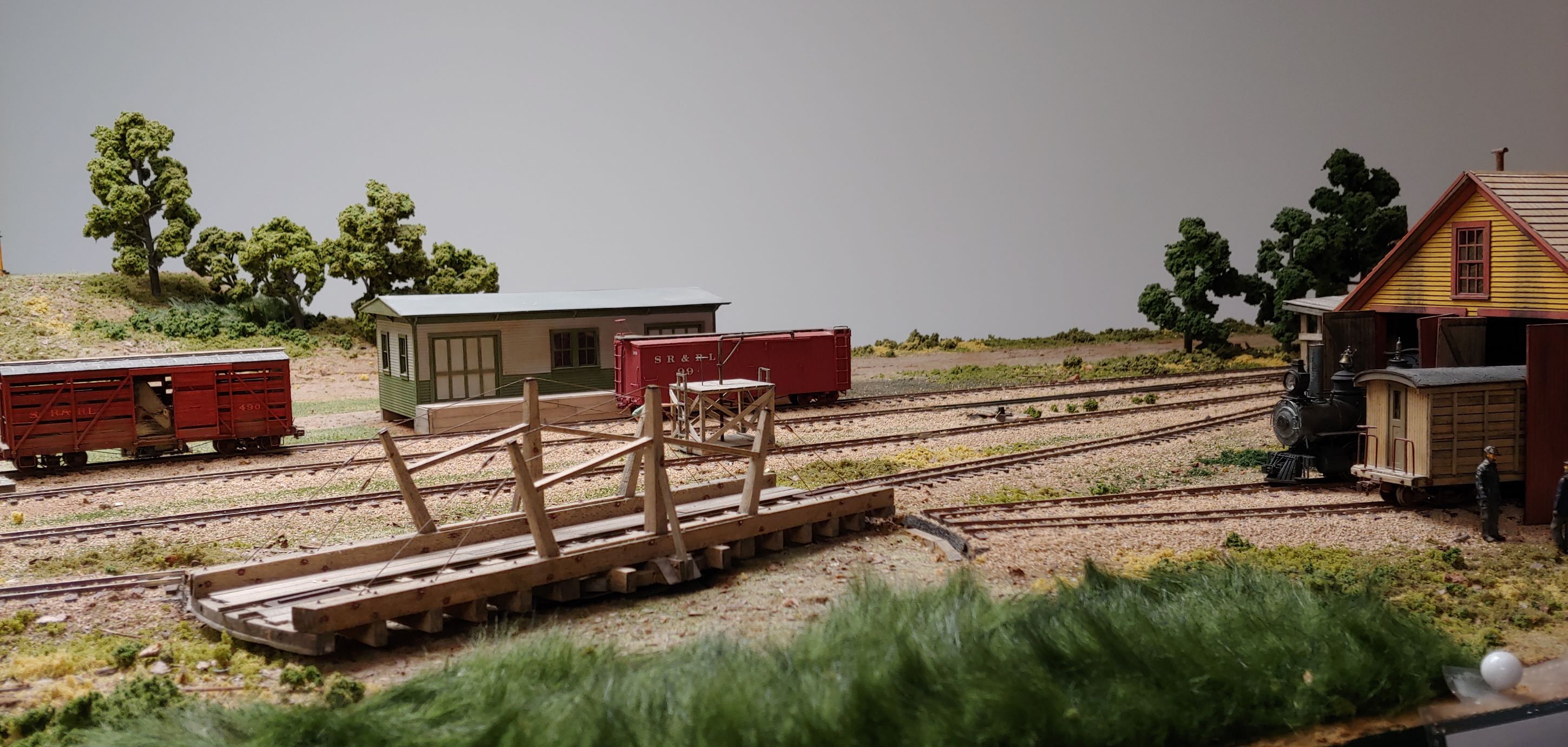
The Strong Depot is the heart of the community, and a highlight of the modeled portion of Strong. It is from the superb Banta Modelworks kit, although I added laser-cut wood shingles, a weather vane, and some other details.
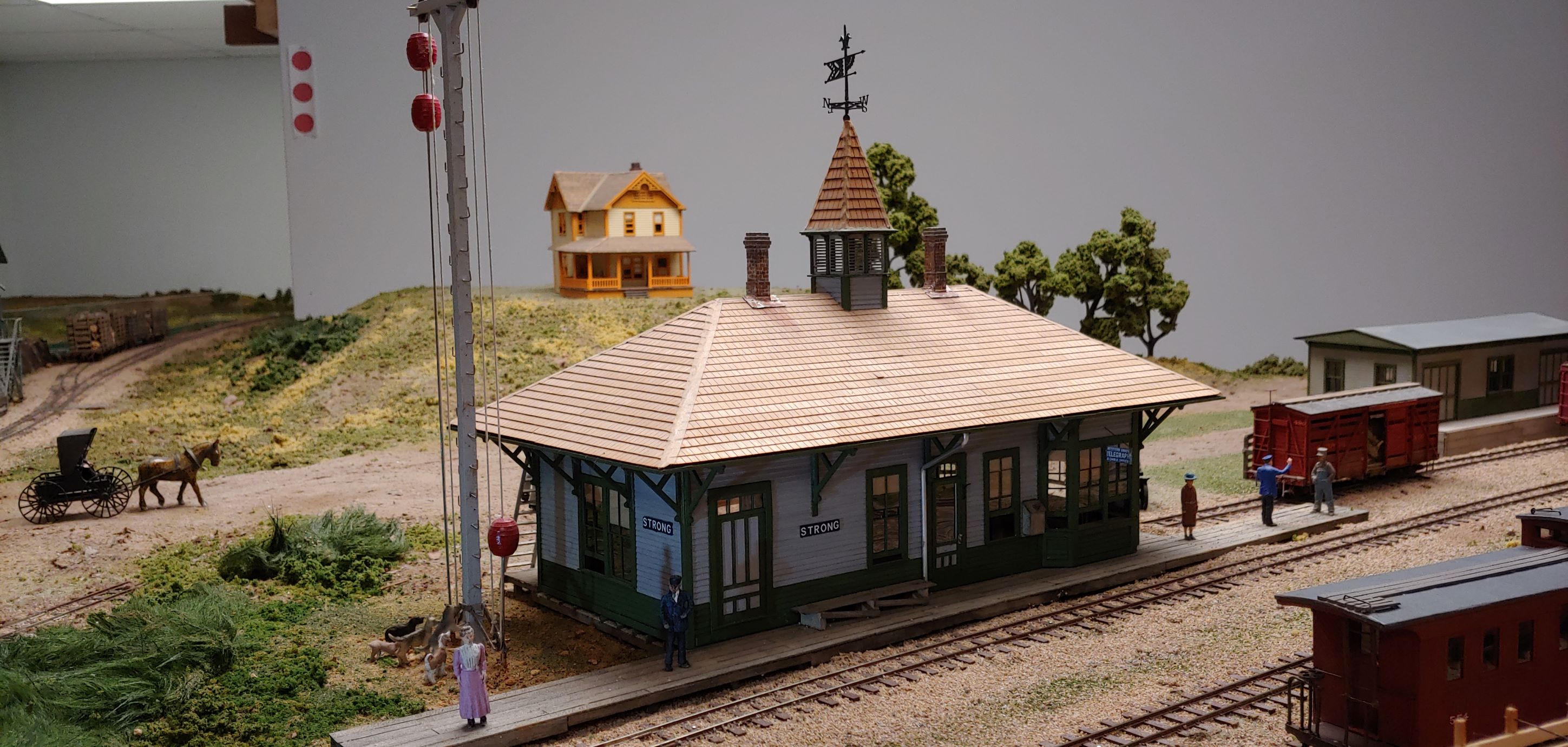
The ball signal works, as you can see in THIS VIDEO.
It used to be positioned at the south side of the depot but -- following a slow-speed head-on collision -- it was moved to the north side, for better visibility. Note that the cat atop the signal mast is not coming down any time soon. If you look closely at the Strong photos, you will see small pieces of paper on the walls, with one, two, or three red dots. These are "cheat sheets" for guest operators. One ball up means that northbound trains from Farmington can enter the yard, two balls up means that southbound trains from Phillips can enter the yard, and three balls up means that southbound trains coming off of the F&M from Kingfield can enter the yard. All balls down (fail-safe indication, in case the rope breaks) means that no trains can enter the yard:
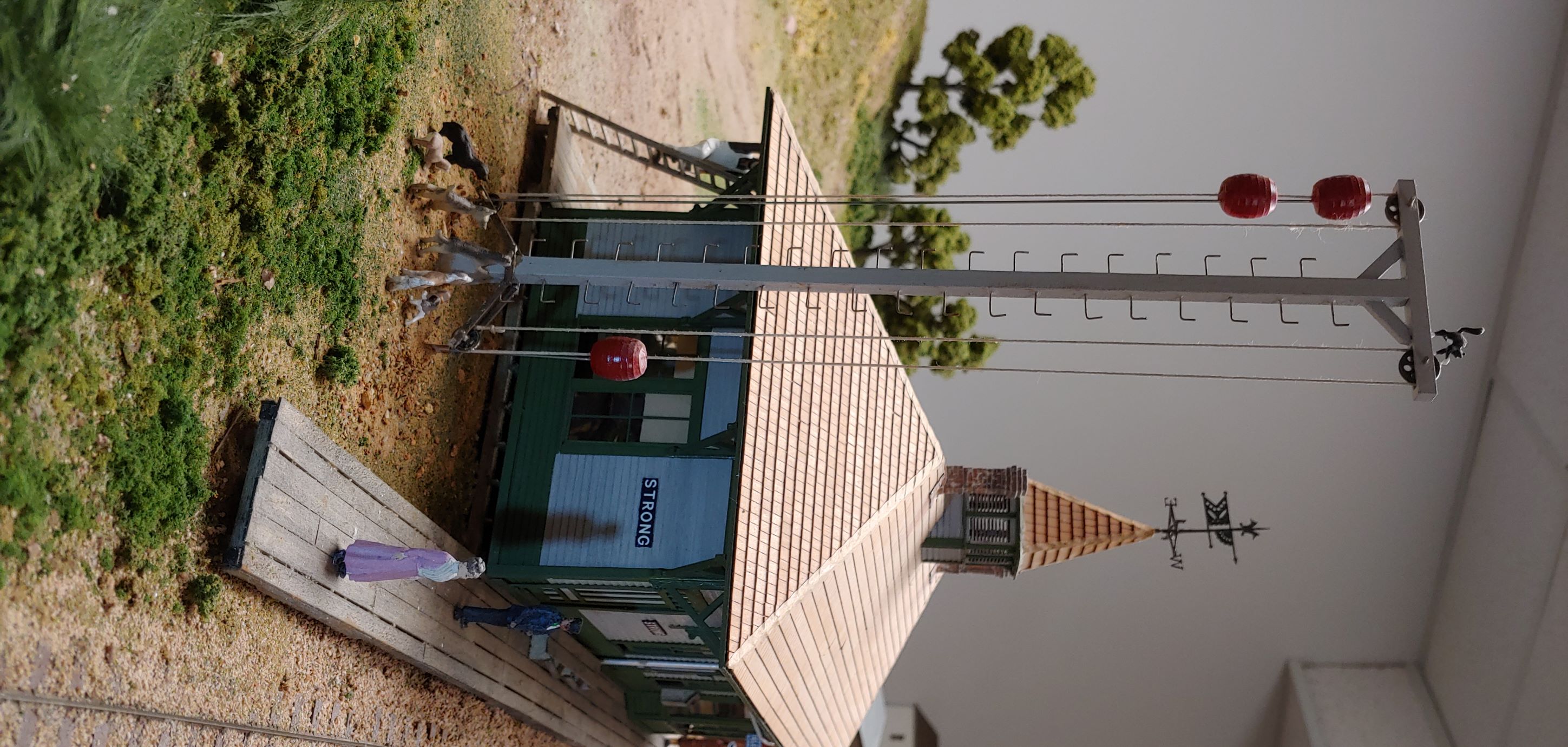
Speaking of the F&M, this is an engineman's view from a southbound train, from Kingfield, about to enter Strong. The Forster Mill, once the world's largest producer of toothpicks, is on the right:
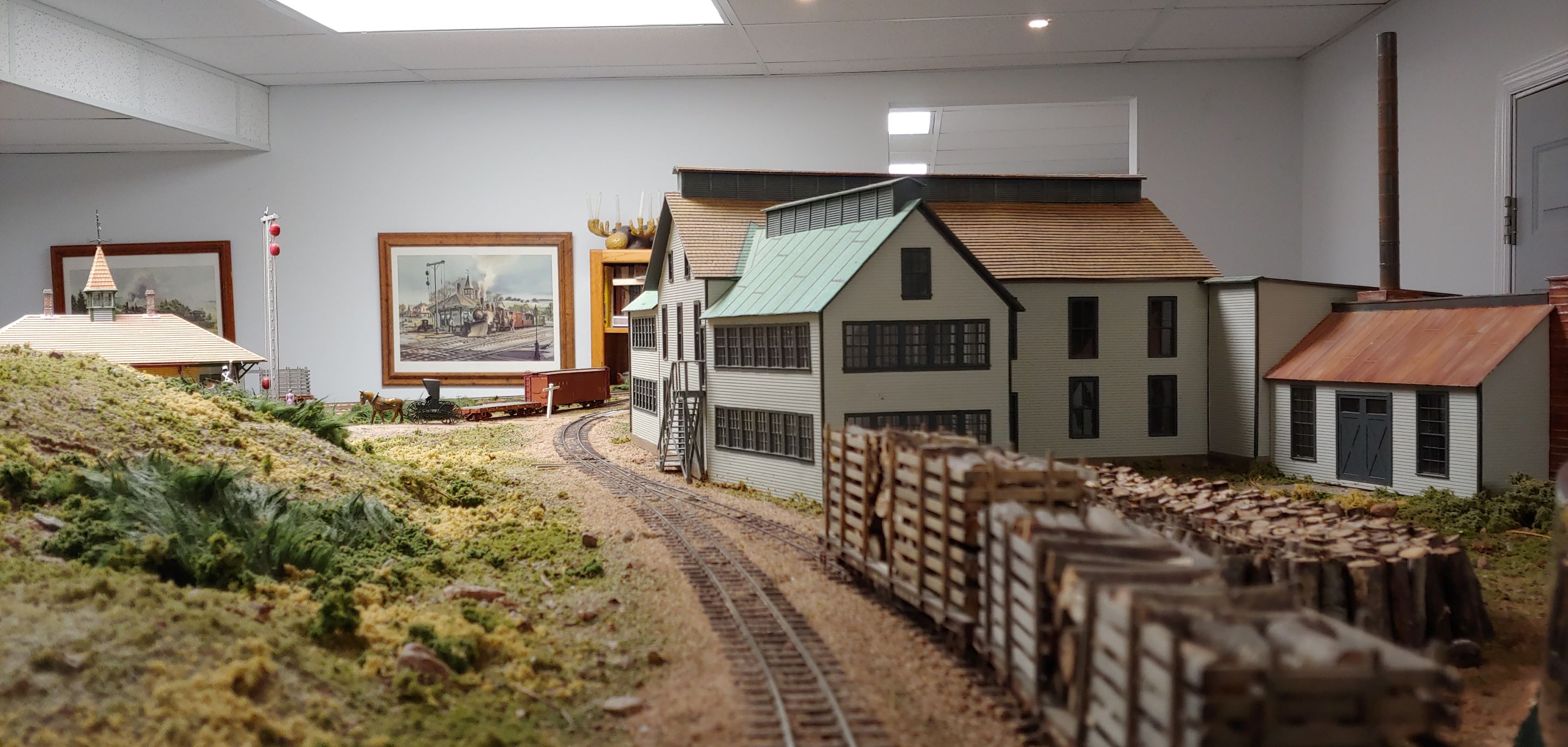
Here is the back side of the Forster Mill:
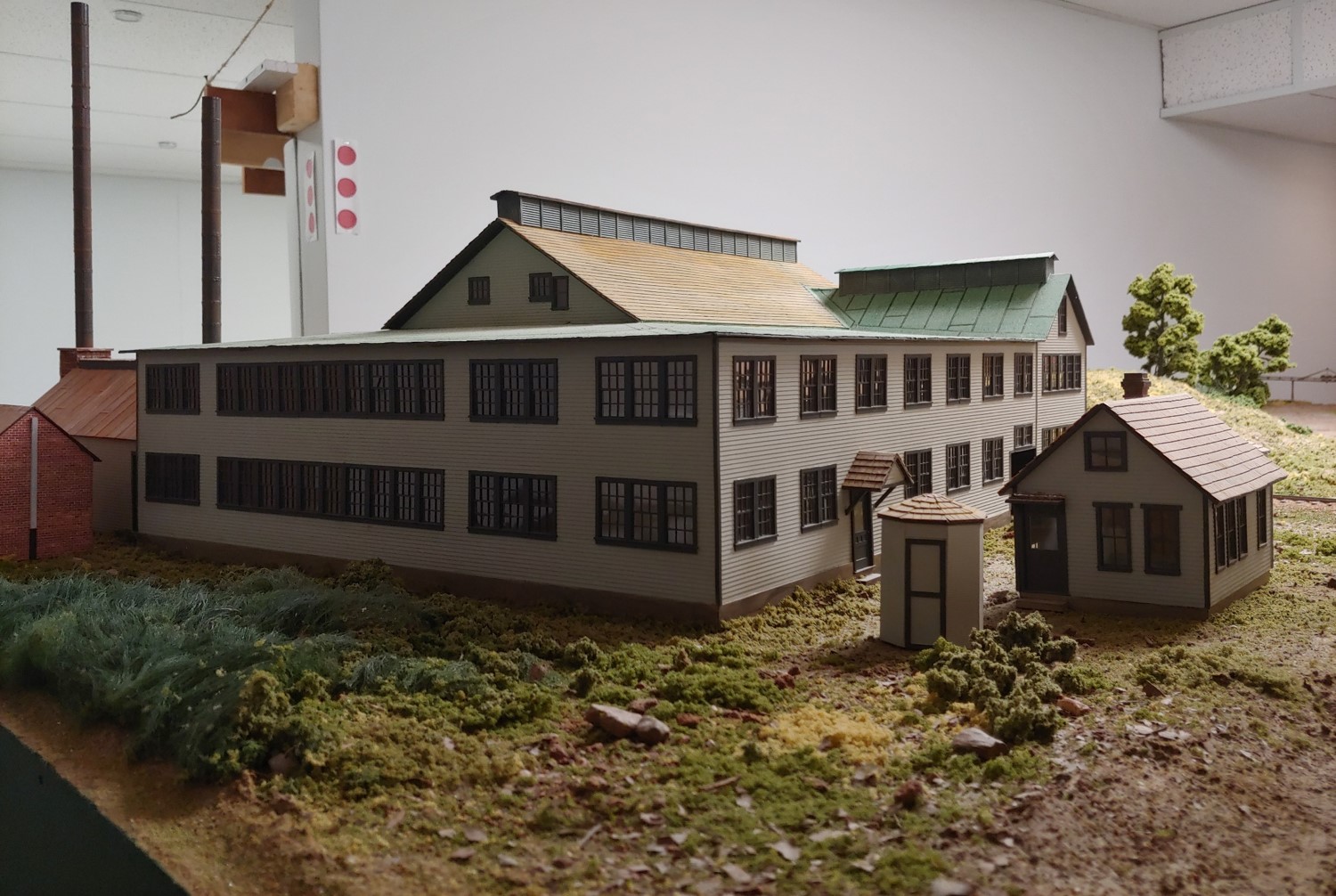
Comparison of model and prototype:

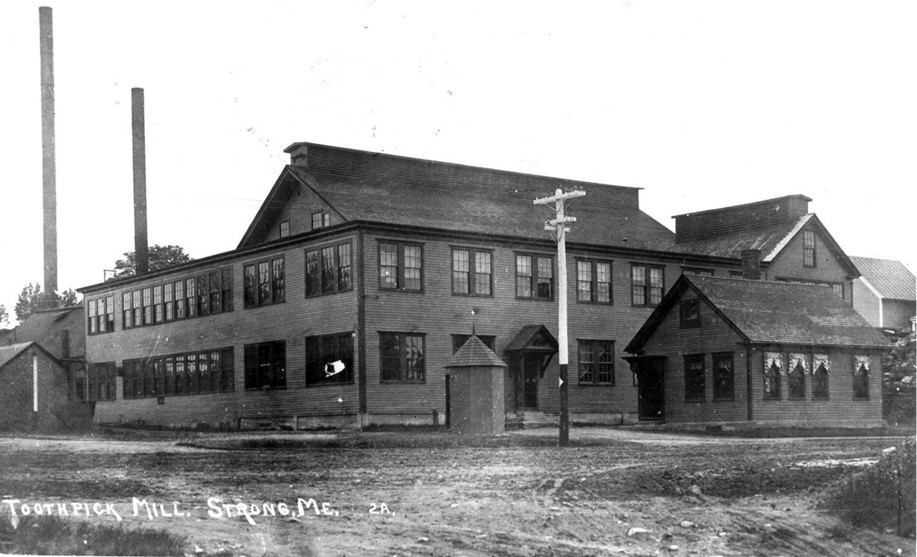
This image shows the relationship of the depot to the Forster Mill in the left background:
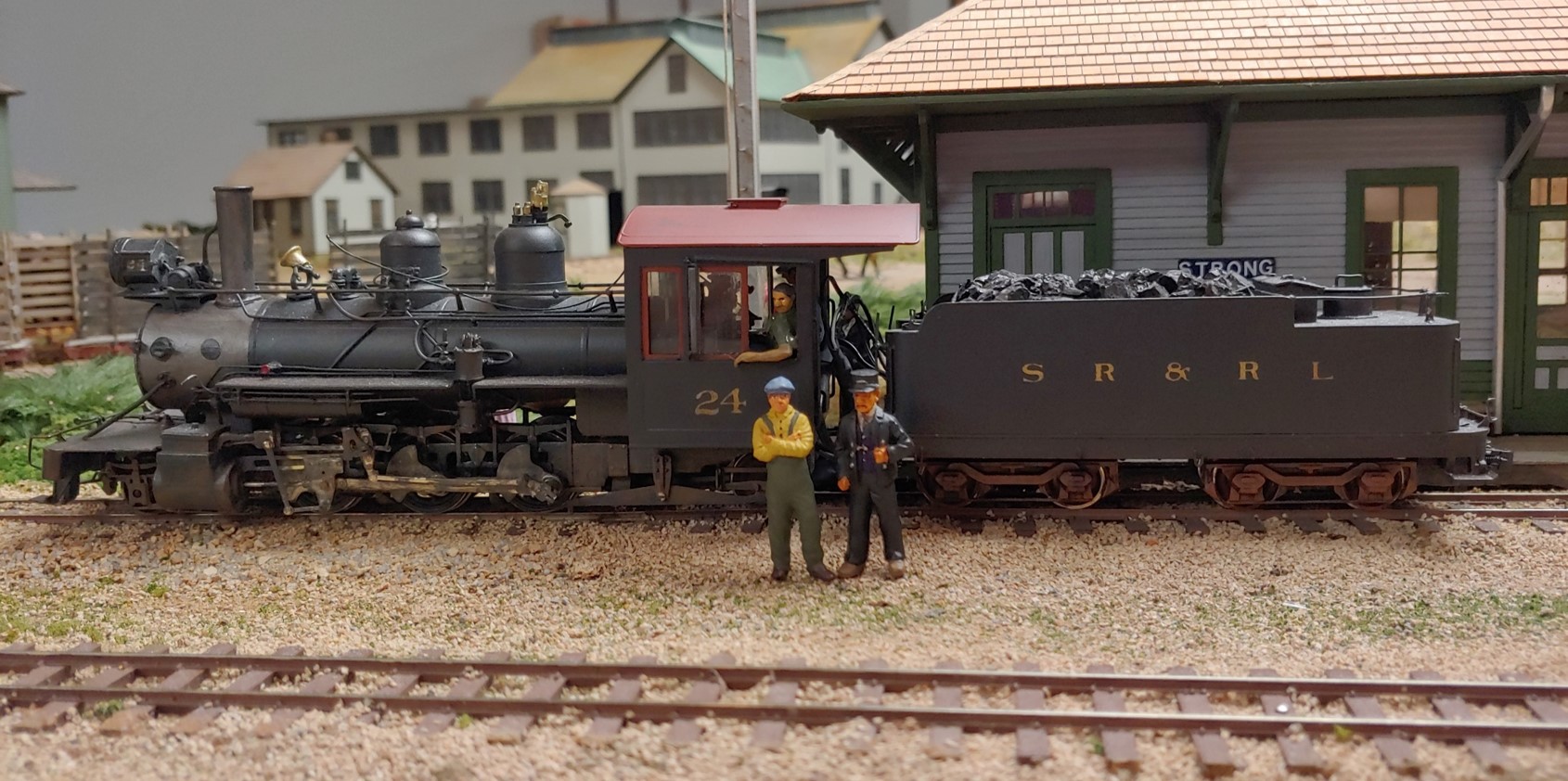
The same photo, in sepia tone, with a prototype photo. For some reason, I posed a model of the No. 24 there -- should have used the No. 23:
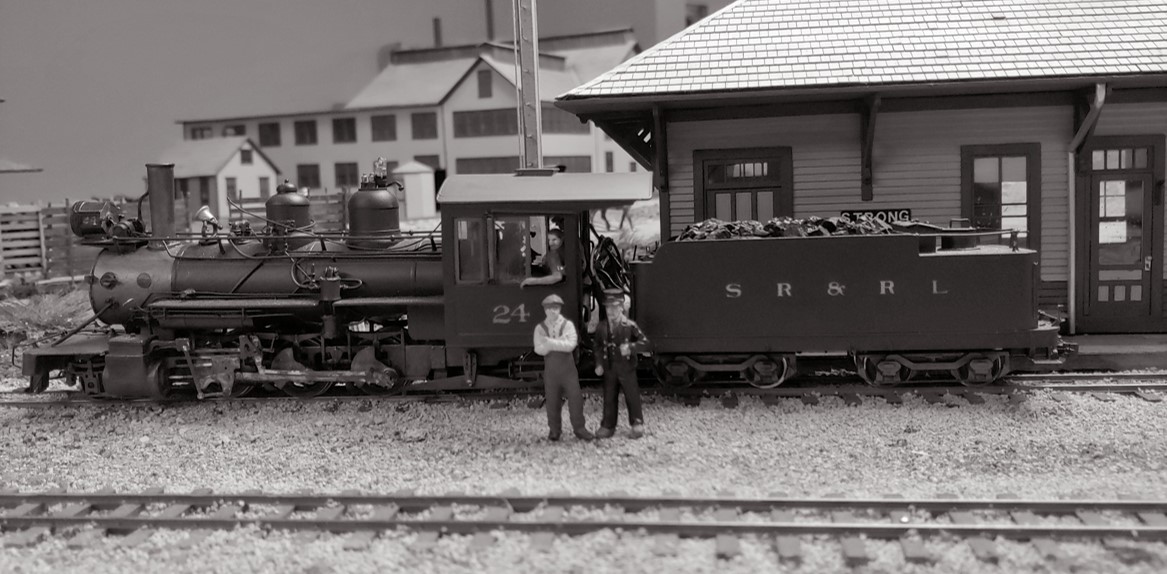
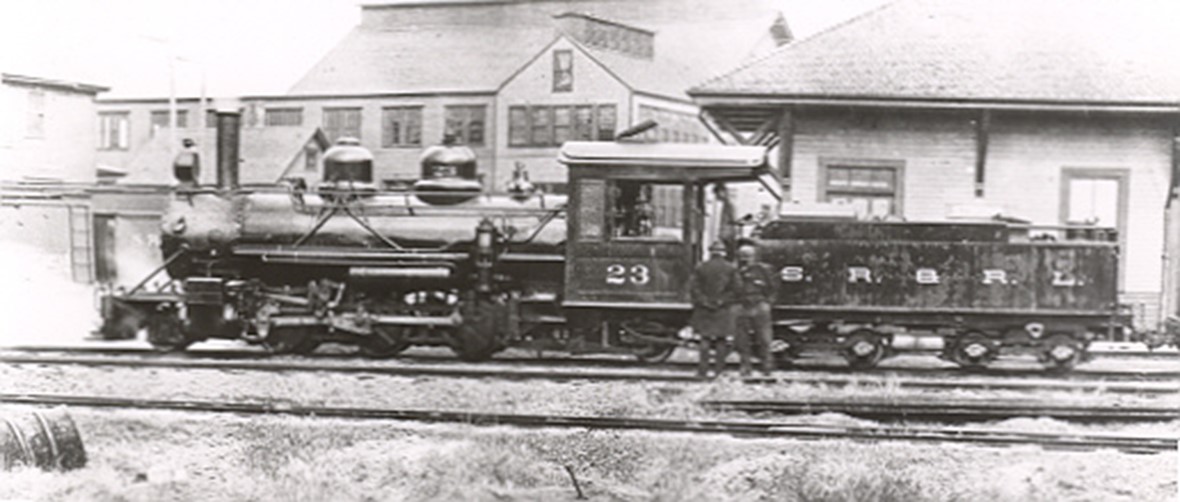
Behind the depot is the "house on the hill" that appears in many of the photos taken of the Strong yard, built from a modified S-scale kit by Branchline Trains / Laser Art "Deluxe Farmhouse" kit:
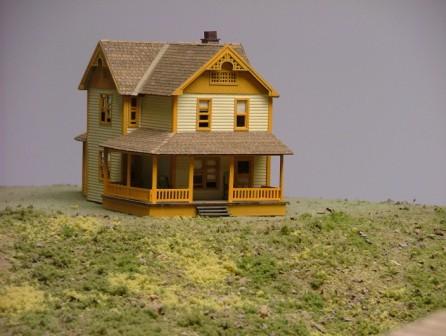
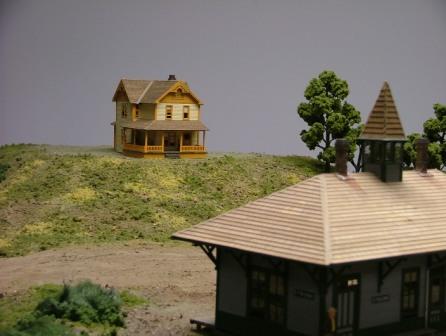
Here are some more photos of the depot area, prototype and model:
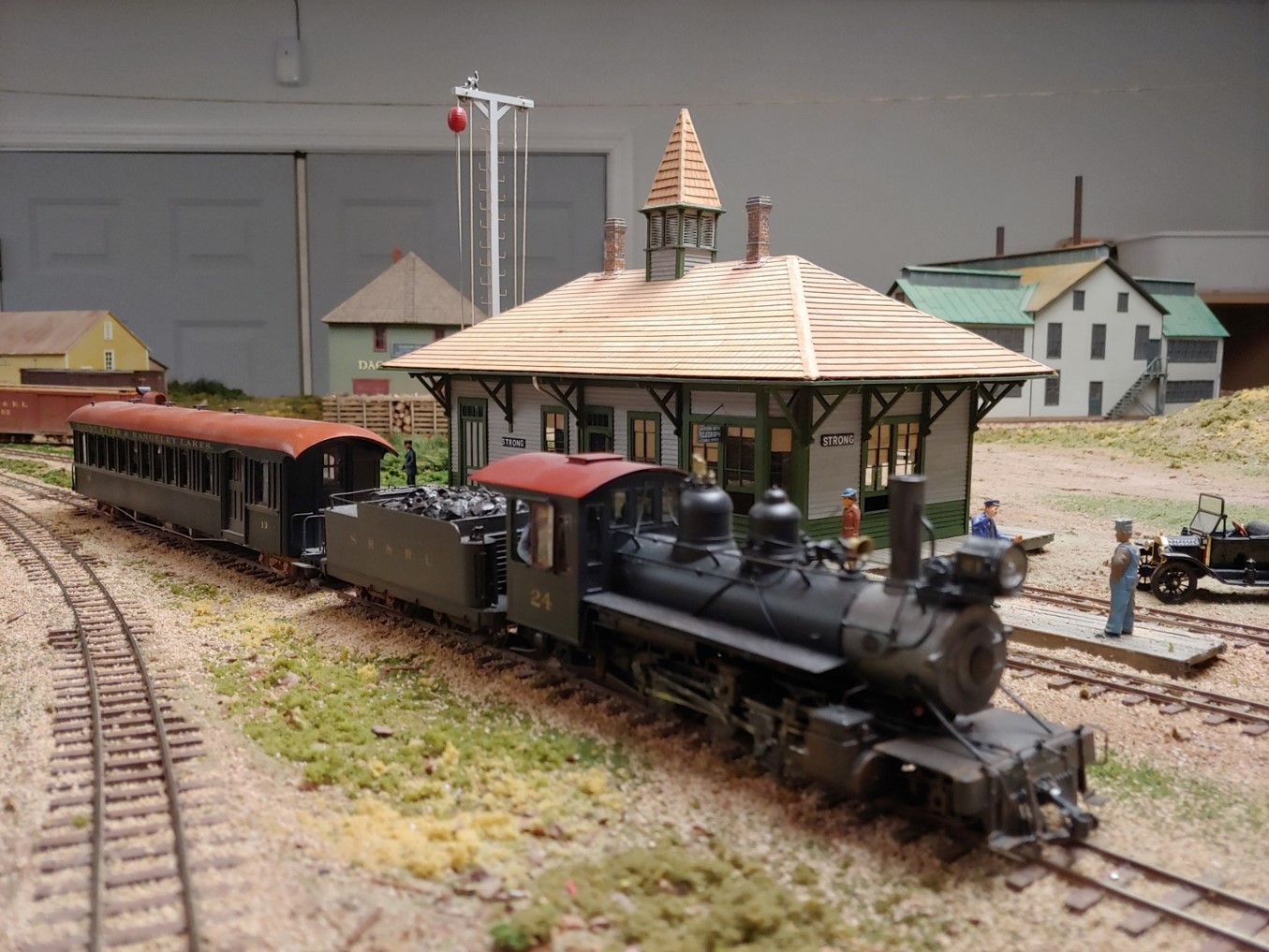
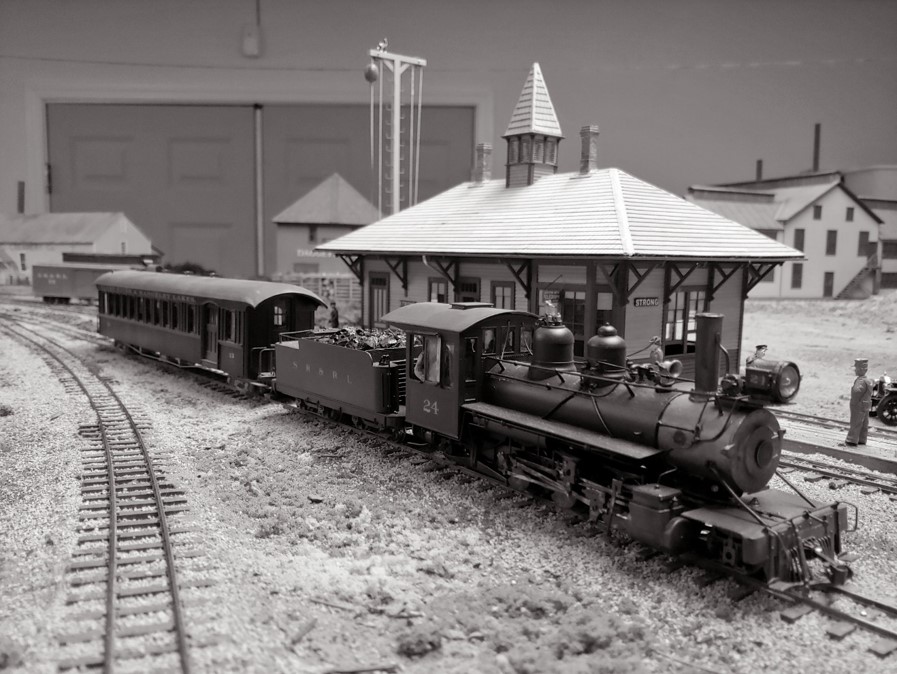
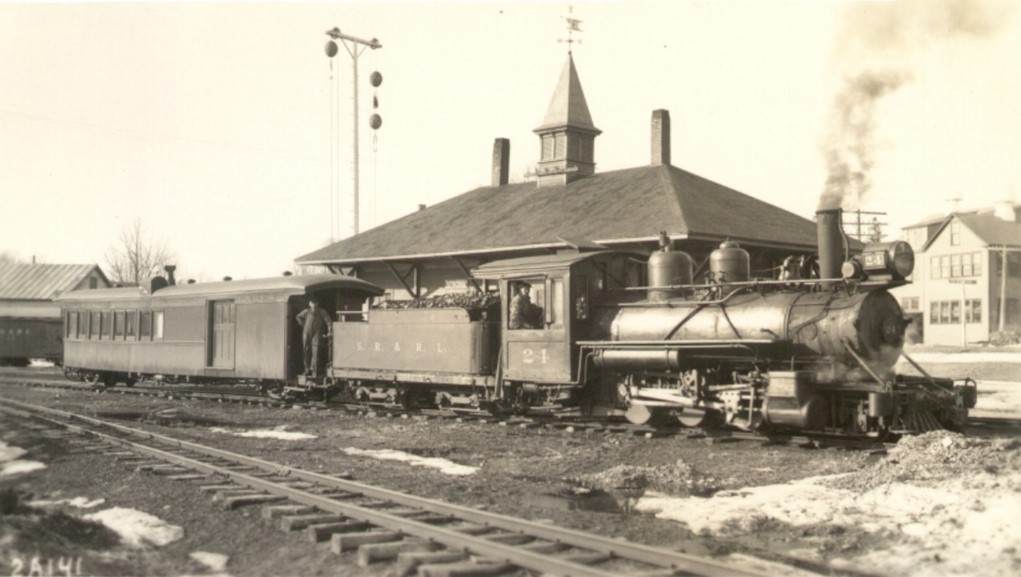
It was not quite clear when the depot's original Phillips & Rangeley colors gave way to the grey and green of the Maine Central. I say that it was the summer of 1919, and here is a painting crew to prove it:
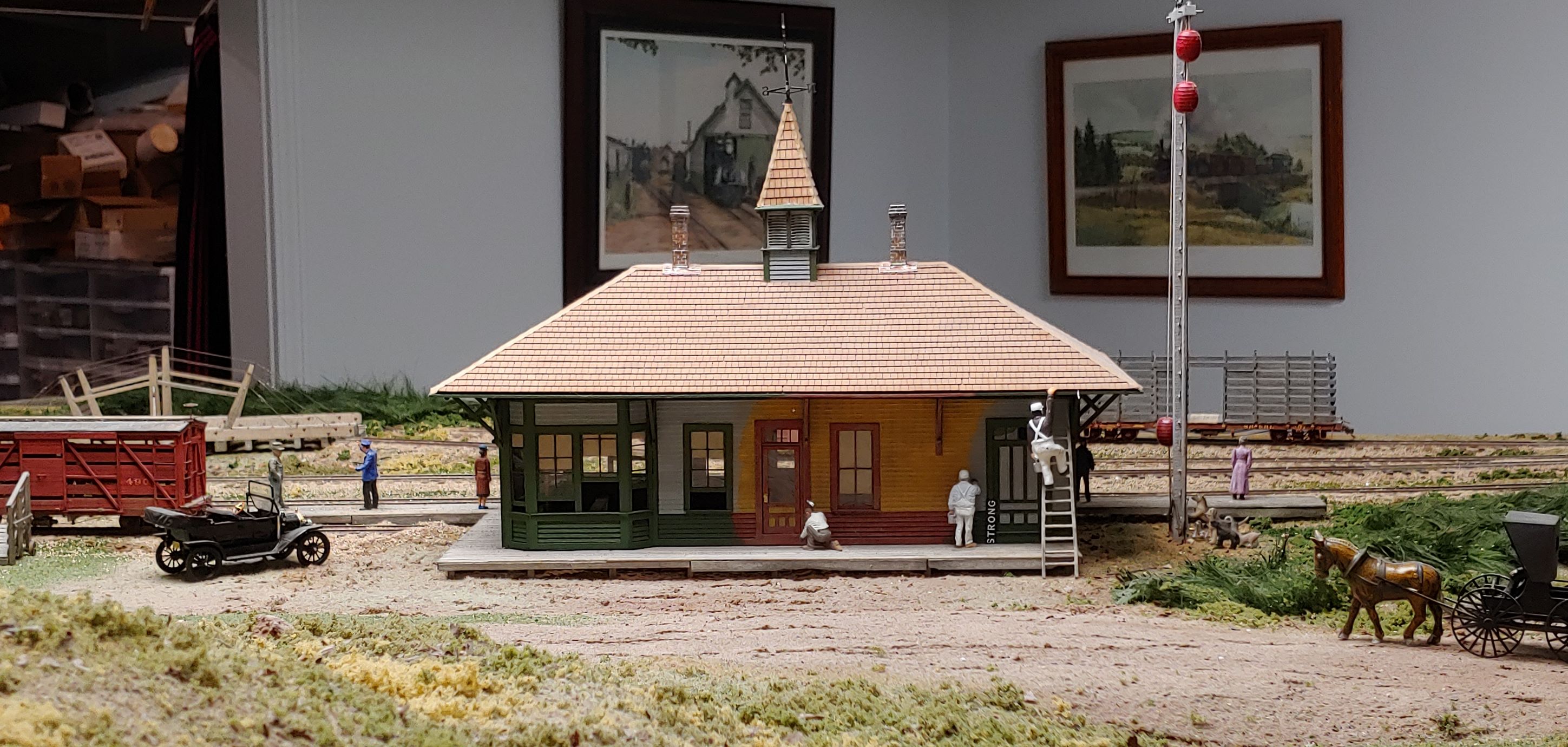
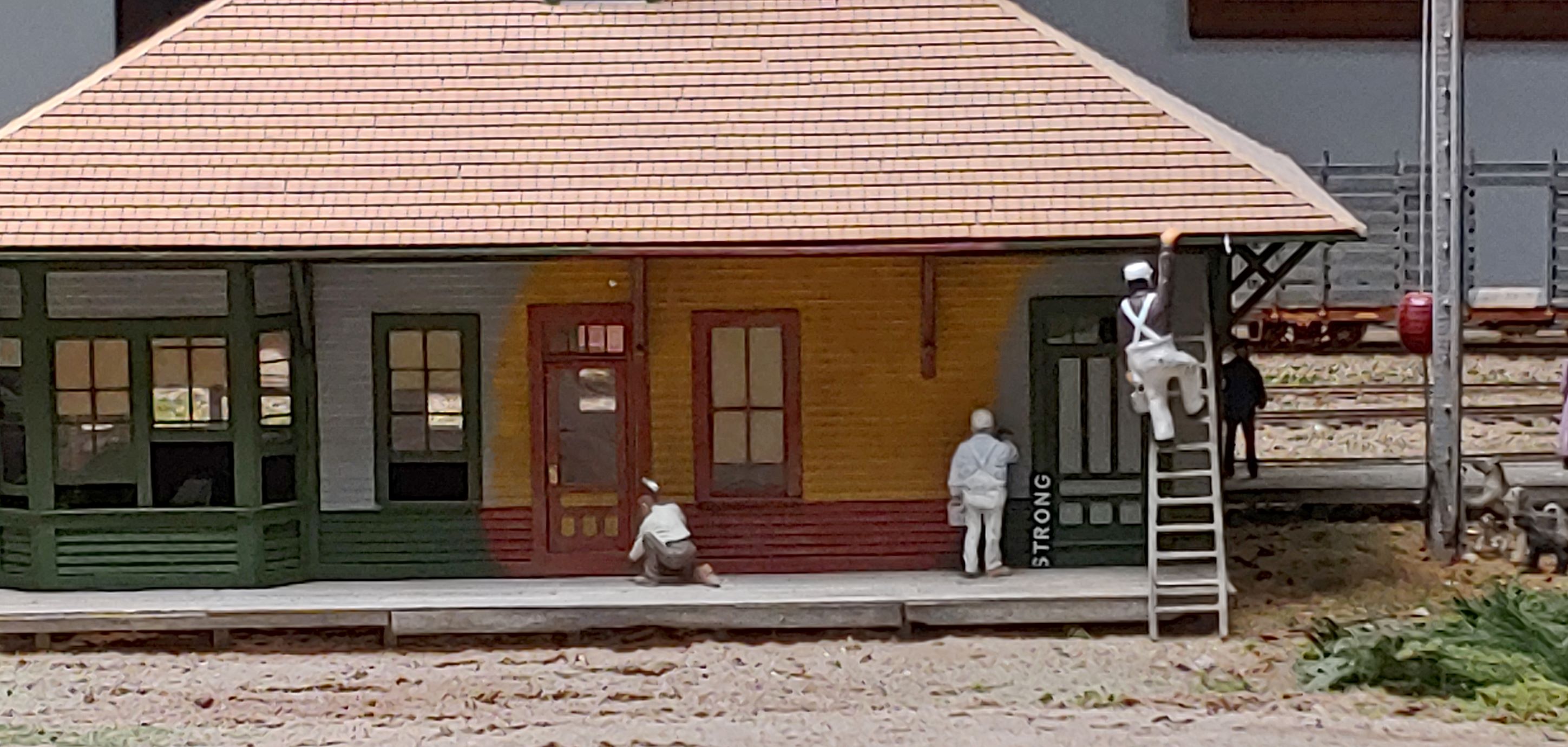
Moving on to the other side of the tracks, we find the Daggett and Will Store:
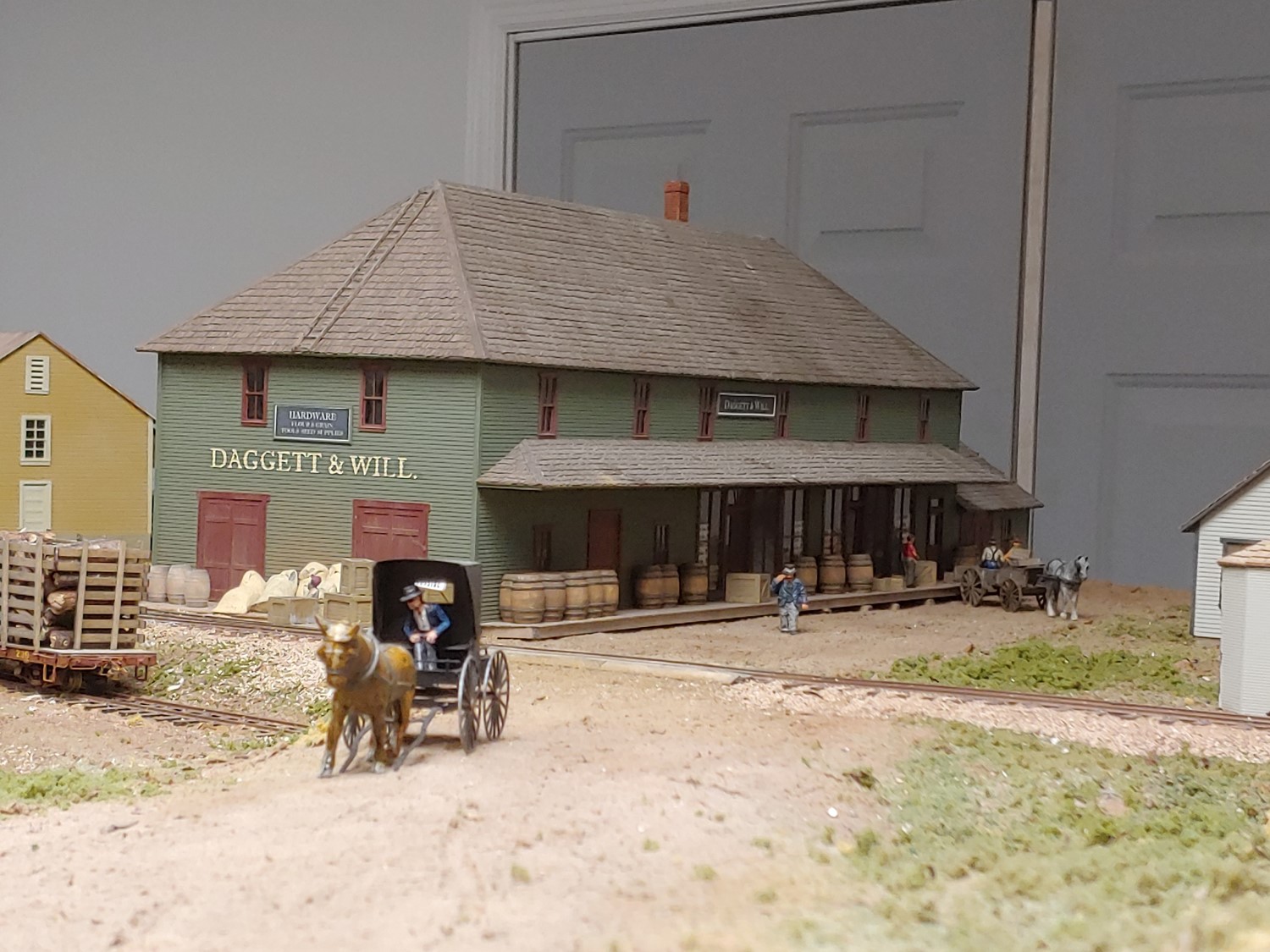
As above, the model and the prototype:

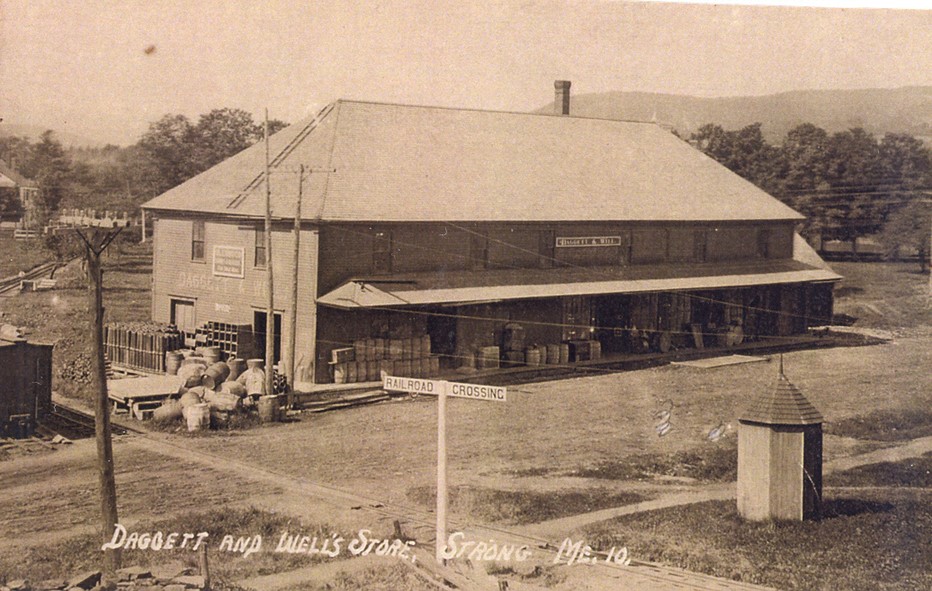
Just across Depot Street from the Daggett and Will store is the New England Creamery building Cream Car 33 was a Sandy River Railroad (i.e., pre-1908 consolidation) car that was off of the roster by 1919. But, it is a beautiful kit, from Portland Locomotive Works, and I couldn't resist having it on the layout. SR&RL No. 6 is the go-to starter locomotive for anyone modeling in On2. It originally came with an open-frame motor, since replaced, with a TCS Wow Sound decoder, a keep-alive, extra pick-ups, etc. The prototype still exists, at the Wiscasset, Waterville & Farminton Railway Museum, although they insist on calling it WW&F No. 9.

To appreciate the humor in this scene, you will want to read the Andy Aldrich "Getting Even" story that is on pages 360-361 of Robert C. Jones, Two Feet Between the Rails. Every time engineman Ed West pulled past the creamery, one of the employees "accidentally" doused him with a hose. After putting up with it for a while, Ed cleared the flues, sending a mix of hot water, steam, soot and cinders out of the stack. "It is probably not necessary to say," Andy recalled, "that the newly cleaned platform and walls of the creamery needed some additional attention that day. Probably the thing that was most satisfying to Ed, though, was the fact that the creamery worker in his white outfit was just dripping from head to foot with the hot mixture of water and soot." Judging by the appearance of the worker on the right, he has not yet tangled with Ed West.

Next in line is the massive Toothpick Clearing House, an unmistakable presence in virtually every photo taken of Strong. It is still there, with a convenience store named The White Elephant on the ground floor, but the exterior is so altered that it is unrecognizable. Ironically, the building is no longer white! The model is about three actual feet in length, and uses a lot of Grandt Line S-scale 6-over-6 windows. I mentioned the "cheat sheets" that guest operators could use to understand the ball-signal indications. There is one near the right edge of the photo, just above the roof of the Daggett and Will store. Three red dots means that a train from Kingfield can enter Strong Yard, as long as three balls are up on the ball signal:
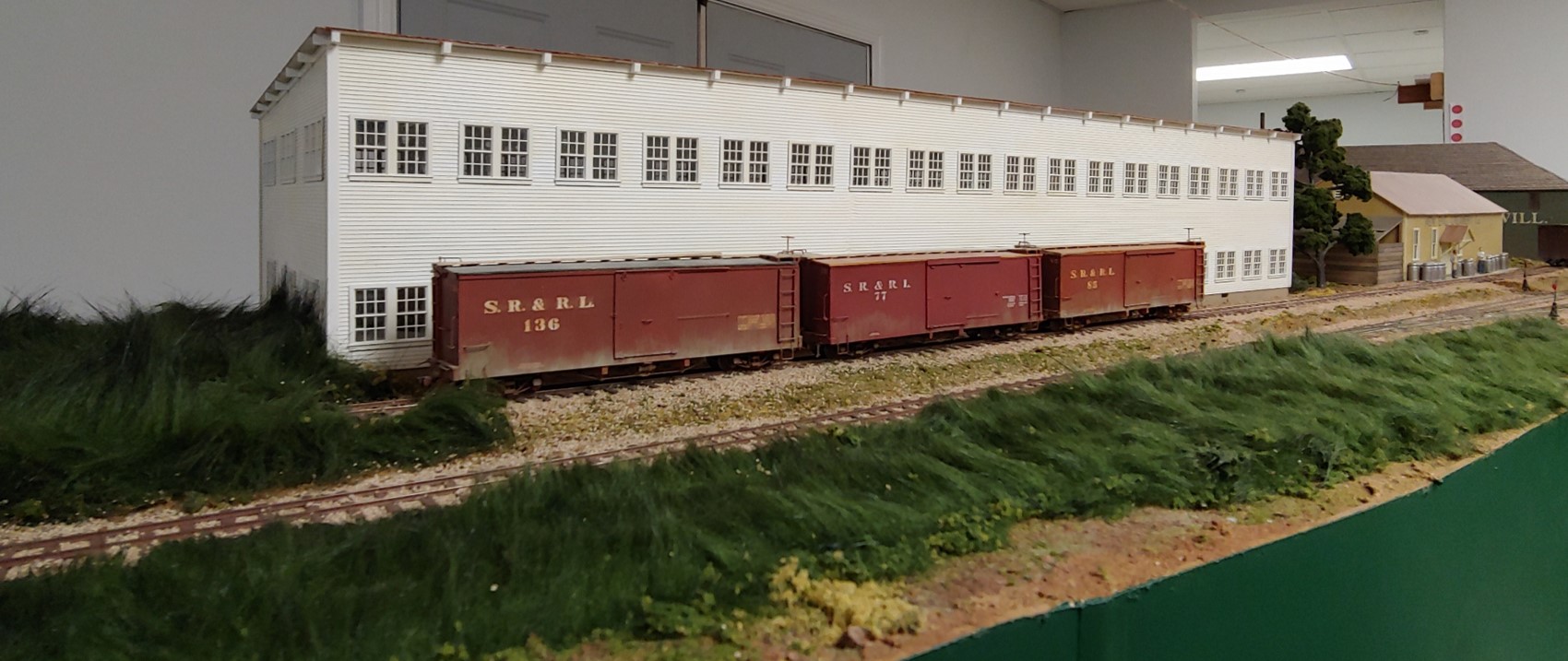
Here is a black-and-white version of the photo, and below it a photo of the prototype:
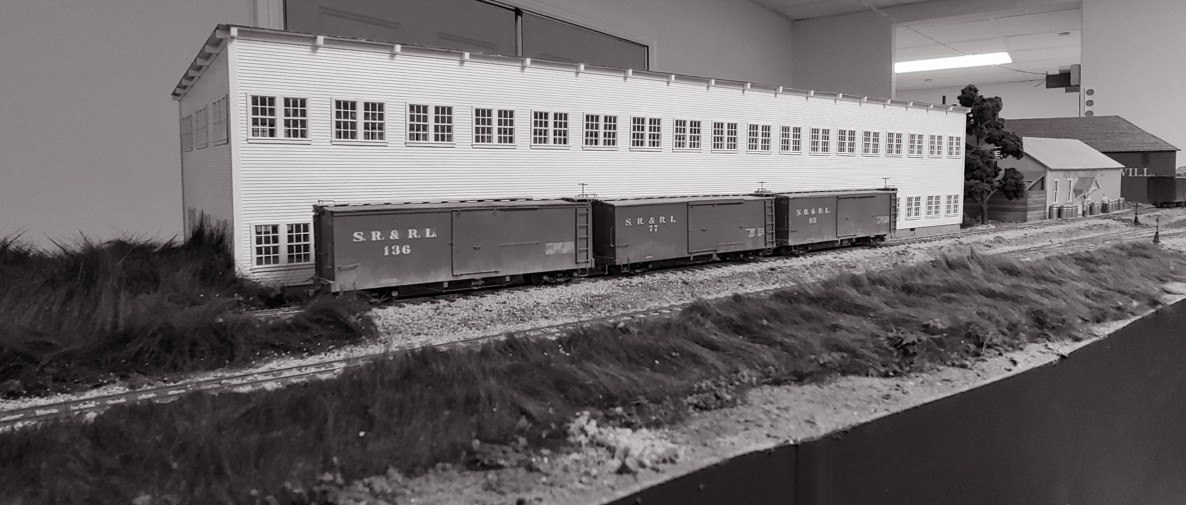
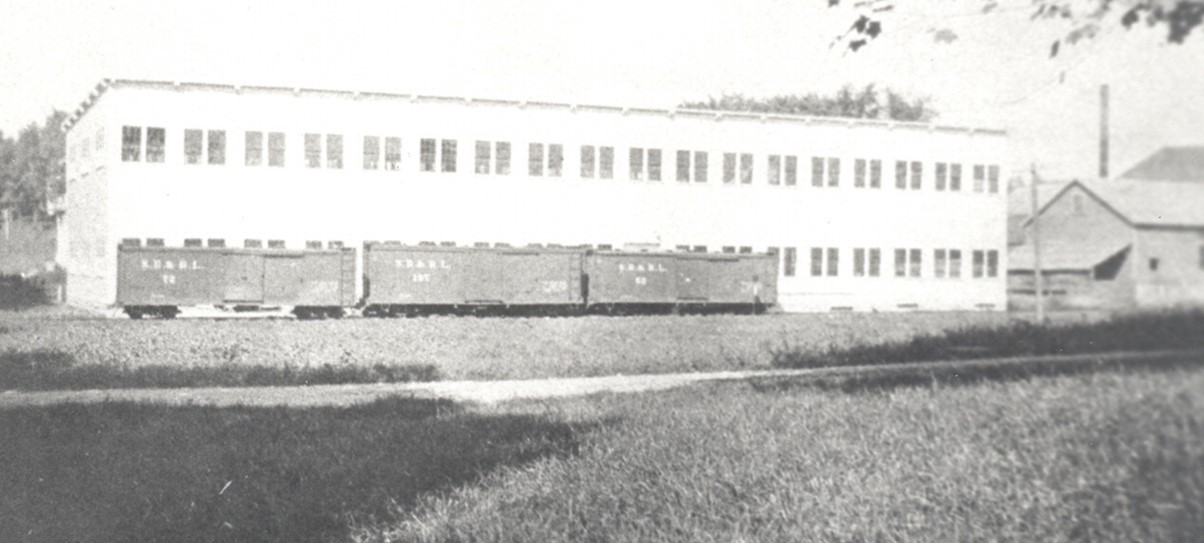
As we leave Strong, headed for Phillips, we cross Main (NOT Maine) Street, and will soon cross Valley Brook, a short distance to the west (railroad north). If you look at the images above, you will see that I originally omitted Main Street, which should have been along the left side of the Toothpick Clearing House. I have added it recently. I model the summer of 1919, but I could not resist honoring the annual springtime ritual of mud season in Maine.


Just to the north of Strong the SR&RL crosses Valley Brook on an impressive bridge, on its way to Phillips. For some reason, it is alo referred to as Porter Brook. Here is the area around the bridge, in process:


Looking railroad south, Strong is visible in the next room:

And now, with scenery. Strong is off to the south (right), while the route to Avon and Phillips is to the north (left). Water is Envirotex casting resin, RPO No. 6 is scratchbuilt:
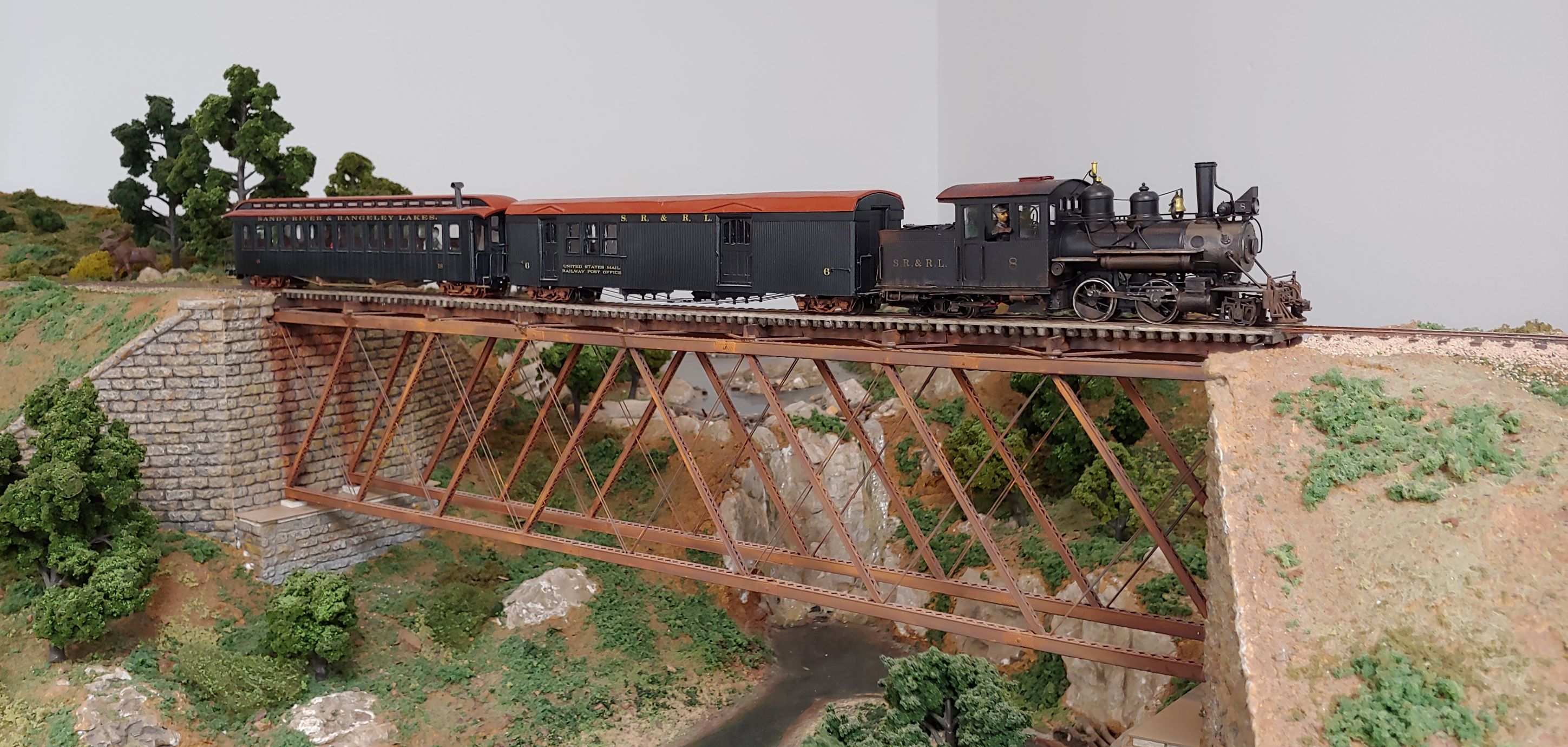
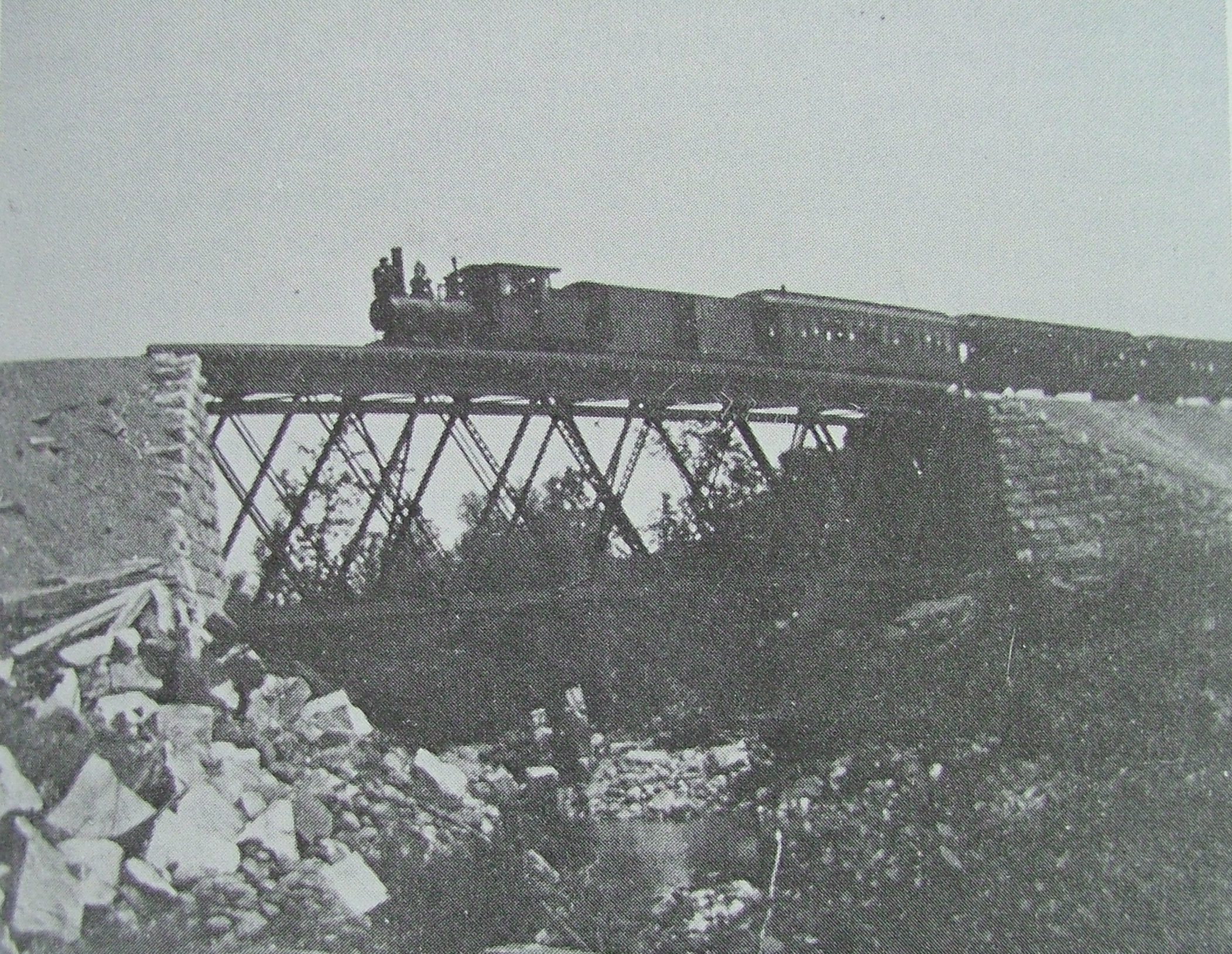
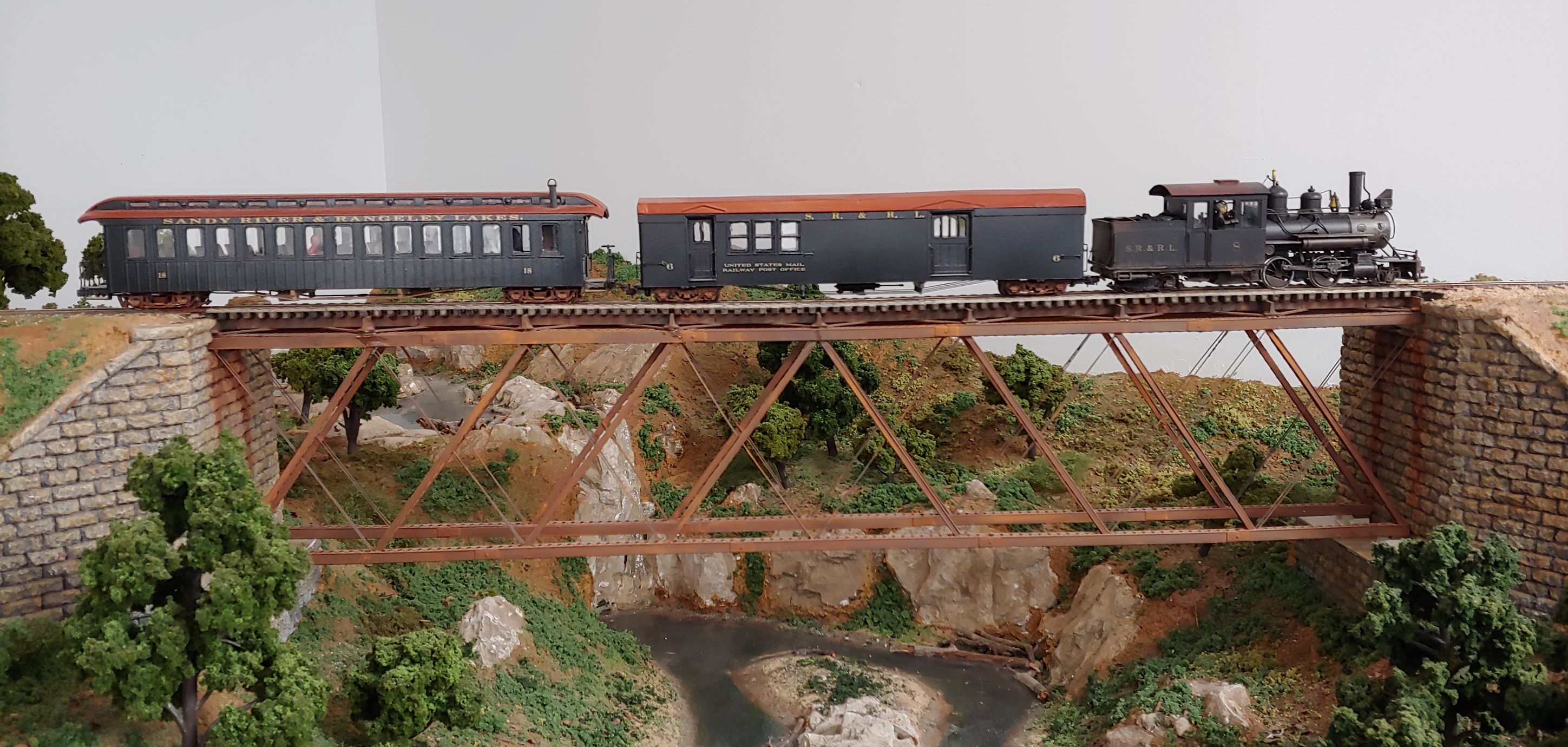
Greater Detail on the building of Strong, in process
Back to the SR&RL layout main page
©




































